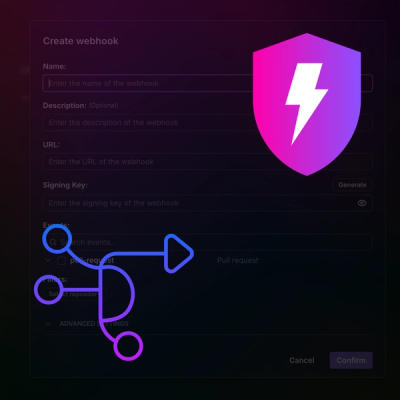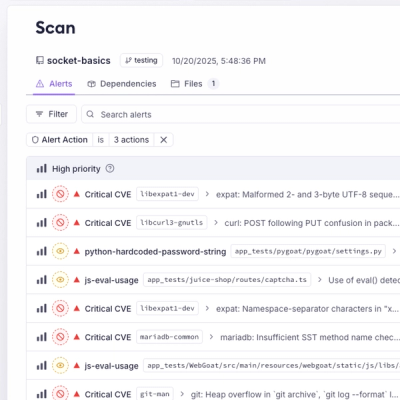
Product
Introducing Webhook Events for Pull Request Scans
Add real-time Socket webhook events to your workflows to automatically receive pull request scan results and security alerts in real time.
lightning-request
Advanced tools
⚡ Lightweight Node.js HTTP client.

npm i lightning-request
lightning-request is the most lightweight HTTP client for Node, it provides a number of extremely useful features.
First, require the library.
const { request } = require('lightning-request');
Then let's make a request in an async function.
(async function() {
try {
const result = await request({
url: 'https://github.com/node-labx/lightning-request',
});
console.log(result.statusCode); // response status code
console.log(result.data); // response data
} catch (error) {
console.log(error);
}
})();
These are the available config options for making requests. Only the url is required. Requests will default to GET if method is not specified.
{
// `url` is the server URL that will be used for the request
url: 'http://www.example.com/',
// `method` is the request method to be used when making the request
method: 'get', // default
// `headers` are custom headers to be sent
headers: {'Content-Type': 'application/json'},
// `data` is the data to be sent as the request body
data: {
foo: 'bar'
},
// `timeout` specifies the number of milliseconds before the request times out.
// If the request takes longer than `timeout`, the request will be aborted.
timeout: 1000, // default is `15000` milliseconds
// `responseType` indicates the type of data that the server will respond with
// options are: 'json', 'text', 'buffer'
responseType: 'json', // default
// `agent` define a custom agent to be used when performing http or https requests,
// respectively, in node.js. This allows options to be added like `keepAlive` that are not enabled by default.
agent: new http.Agent({ keepAlive: true }),
}
The response for a request contains the following information.
{
// `body` is the raw buffer data from the server response
body: <Buffer >
// `statusCode` is the HTTP status code from the server response
statusCode: 200,
// `statusMessage` is the HTTP status message from the server response
statusMessage: 'OK',
// `headers` the headers that the server responded with All header names are lower cased
headers: {},
// `data` is the response data that was provided by the server
data: {}
}
FAQs
⚡⚡⚡Lightweight Node.js HTTP client based on http.
We found that lightning-request demonstrated a not healthy version release cadence and project activity because the last version was released a year ago. It has 1 open source maintainer collaborating on the project.
Did you know?

Socket for GitHub automatically highlights issues in each pull request and monitors the health of all your open source dependencies. Discover the contents of your packages and block harmful activity before you install or update your dependencies.

Product
Add real-time Socket webhook events to your workflows to automatically receive pull request scan results and security alerts in real time.

Research
The Socket Threat Research Team uncovered malicious NuGet packages typosquatting the popular Nethereum project to steal wallet keys.

Product
A single platform for static analysis, secrets detection, container scanning, and CVE checks—built on trusted open source tools, ready to run out of the box.